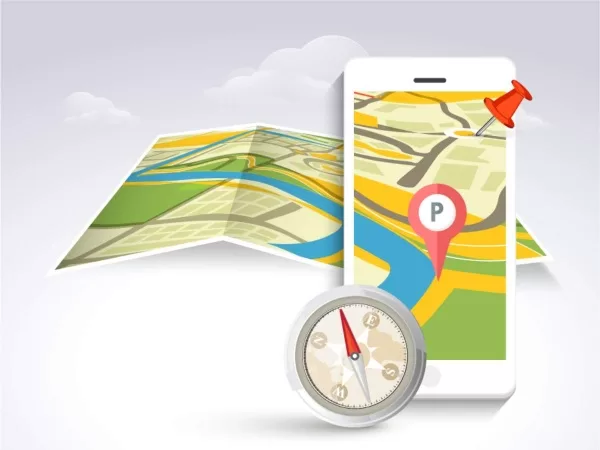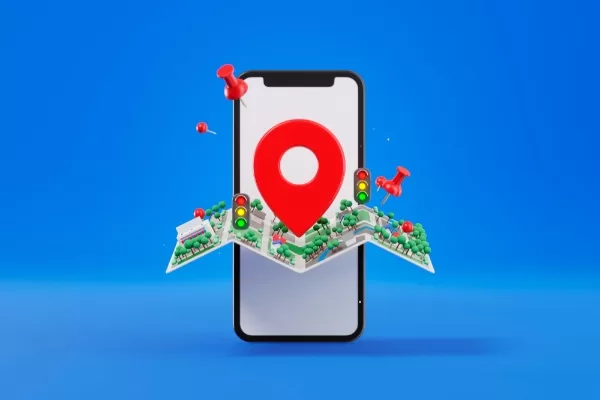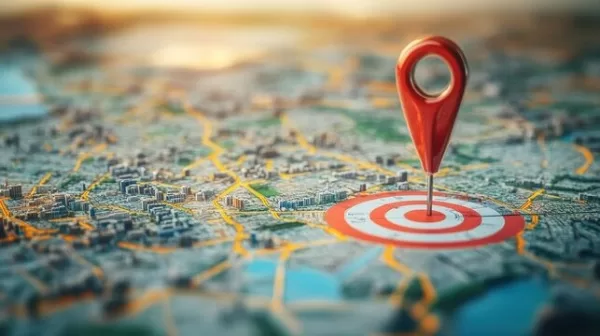Insights
Geotagging Images for SEO: Does It Actually Move the Needle in 2025?
On Digitals
02/09/2025
16
So you’ve probably heard about geotagging images for SEO, right? It’s one of those tactics that keeps popping up in marketing circles, especially now in 2025. Everyone’s trying to squeeze every bit of advantage they can get for their online visibility, and with search engines getting pickier about local relevance and what users actually want, it’s no wonder people are asking if geotagging photos actually does anything for rankings.
What Is Geotagging Images for SEO and Why Should You Care?
What exactly does geotagging images for SEO mean?
When we talk about geotagging images for SEO, we’re basically talking about adding specific geographic information to your photos. Think latitude and longitude coordinates tucked away in the image’s metadata (that’s the EXIF data, if you want to get technical). This location data tells anyone looking at the file exactly where the photo was snapped.
The theory here is pretty logical. By adding this location info, you’re giving search engines extra context to connect your image with a specific place. So when someone searches for something local, your geotagged image might have a better shot at showing up. It’s like slapping a virtual map pin on your images that could help boost your local visibility.

Why should you pay attention to geotagging images for SEO?
Why has geotagging images for SEO become a talking point again in 2025?
Well, Google shook things up again in 2025 with updates that put more weight on image relevance and user intent than before. And let’s face it, mobile searches and those “near me” queries just keep growing year after year. Businesses are scrambling to find ways to stand out when people search for stuff in their neighborhood.
These Google updates got everyone talking about whether geotagged images could finally give businesses that SEO edge they’ve been looking for. It makes sense when you think about how people actually search nowadays, they want results that match their real-world context.
Can Geotagging Images for SEO Boost Your Local Rankings?
Does geotagging images for SEO help with “near me” queries?
Okay, so here’s where it gets interesting. Recent research suggests that geotagging images for SEO might actually do something, but don’t get too excited yet. There was this 10-week study that Search Engine Land published back in March 2025, and it showed some measurable improvements for “near me” searches when businesses used geotagged images.
The key here was that the GPS data embedded in the images had to match where the person searching was actually located. Pretty cool, right? But before you start geotagging everything in sight, some SEO practitioners are throwing out some reality checks. They’re saying yes, the results are interesting, but this doesn’t mean you’ve found the holy grail of SEO that works for all types of searches.
Have other tests shown geotagging images for SEO is worthwhile?
Well, not really. Earlier case studies have been pretty skeptical about whether geotagging images for SEO actually moves the needle. Google often strips out that EXIF metadata when you upload images anyway. So all that careful geotagging work might never even make it to the search algorithms in the first place. These findings suggest that while geotagging images for SEO sounds like it should work, you probably shouldn’t bet the farm on it.
What Are the Benefits of Geotagging Images for SEO?
Can geotagging images for SEO enhance local visibility in image search?
Even though the studies show mixed results for regular rankings, there might still be some good reasons to try geotagging images for SEO. When you embed that geo-data, search engines can potentially connect your visuals with specific locations, which could be helpful.
Agencies have figured that could be especially useful for people on their phones who are looking for local businesses. Picture this: someone’s traveling and searches “coffee shop near me,” and they find an image that’s geotagged to their exact location. That extra context might just give you the local relevance boost you need.

Benefits of geotagging images for SEO
Are there user-experience or credibility benefits to geotagging images for SEO?
Absolutely. Even if the algorithm benefits are questionable, geotagging images for SEO can make your content feel more authentic and connected to a real place. When people see location-rich visuals, they tend to trust the business more because the listings pop up appropriately with the help of geotagging.
This tactic can build user trust and images with context make brands look more credible. So even if you’re not seeing huge SEO wins, the user experience improvements alone might make it worth doing.
Smarter Ways to Support Geotagging Images for SEO in Your Local Strategy
How do alt-text, filenames, and surrounding content assist geotagging images for SEO?
If you really want stronger local visibility, focusing on the basics is going to give you way more bang for your buck than just geotagging images for SEO. Using descriptive alt-text like “plumber in Downtown Denver” and naming your files something like “denver-bakery-cakes.jpg.”
When you pair images with relevant content on the page, you’re giving search engines crystal-clear signals about location. These optimizations deliver more reliable local SEO benefits compared to metadata that might get stripped away during upload anyway.
Can schema markup or embeds deliver stronger local image signals than geotagging images for SEO alone?
You bet. Adding structured data like geo schema or address markup gives Google accurate, machine-readable location details that actually stick around. Marketing Done Right stresses that embedding maps on your location pages is another solid way to reinforce local signals. That said, you can also combine the efforts of all these methods.
Unlike EXIF data that might disappear when you upload images, schema markup and map embeds stay put and actively guide search engines to understand your location. Together, these strategies can complement or even outperform geotagging images for SEO, giving you more control over your local SEO results.

What to note when geotagging images for SEO
How to Do Geotagging Images for SEO the Right Way
What tools and methods help geotag images effectively?
If you want to try geotagging images for SEO, you’ve got a few options to work with. You can use GPS-enabled cameras or Google Maps to embed that metadata directly into your photos or look for the coordinates. If you’re working with smartphones, just make sure location permissions are turned on so your camera automatically tags images as you snap them.
Want to make sure it’s actually working? Use an EXIF viewer to double-check that the location data got stored properly. It’s always good to verify before you start uploading everything.
How to geotag images for SEO without risking privacy or platform stripping?
Here’s something important to keep in mind. Privacy matters, so always get consent before tagging photos that have identifiable people or sensitive locations in them. You don’t want to accidentally share someone’s private information.
Also, remember what we talked about earlier? Platforms like Google often strip out that EXIF metadata when you upload images anyway. So while you should definitely geotag beforehand if you’re going to do it, don’t count on that data sticking around once your images go live on the web.
What’s the ideal cadence and placement for geotagging images for SEO?
Think strategically here. You don’t need to geotag every single image you have. Focus on the important stuff like hero images, product displays, or those location-based galleries that really showcase your business and where it’s located.
Avoid going overboard with the tagging or getting your locations wrong, because that can actually confuse search engines more than help them. Instead, make it a habit to update and refresh your images regularly. This keeps your content feeling both relevant and trustworthy.
FAQs About Geotagging Images for SEO
Does geotagging images for SEO still work in 2025?
Sometimes. It can help with “near me” queries but generally offers minimal impact. Treat it as a small add-on, not a core SEO strategy.
Will Google still strip EXIF metadata if I geotag images for SEO?
Yes. Google Business Profile and many platforms remove EXIF data on upload, so don’t rely on it staying intact.
What’s more effective than geotagging images for SEO?
Alt-text, descriptive filenames, schema markup, and embedded maps provide stronger local signals.
Do I need to geotag images if I already show my location via address or map?
Not necessarily. Structured data, address details, and map embeds usually achieve the same or better results.
Are there risks to geotagging images for SEO?
Yes. Privacy is the main concern, so avoid tagging sensitive locations or personal data, and strip metadata if it’s not essential.
Final Thoughts
Geotagging images for SEO remains a small but potentially useful tactic, especially for businesses trying to capture local discovery and those “near me” searches. While Google’s 2025 updates show that structured context and optimized metadata carry more weight than raw EXIF data, geotagging can still add authenticity and support hyper-local relevance when you use it thoughtfully.
The key is finding that balance. Using geotags alongside stronger signals like alt-text, filenames, schema, and map embeds creates a well-rounded local SEO strategy that actually drives sustainable visibility.
On Digitals brings you our SEO strategies that align with the latest algorithm updates and best practices. From local optimization to technical SEO and content strategies, we help businesses build stronger online visibility and sustainable growth. If you’re ready to elevate your brand’s search presence with expert guidance, explore our SEO service today.
NEWEST POSTS
- Video Campaign Google Ads: A Practical Guide to Strategy, Formats, and Optimization
- Small Business Branding – 4 Strategies To Boost Your Brand!
- A Complete Guide to Crafting a Powerful Personal Branding Statement That Stands Out
- Brand Identity Explained: Core Definition, Components, and Strategic Value
- Benefits Of Personal Branding – 8 Advantages You Must Know
Read more
